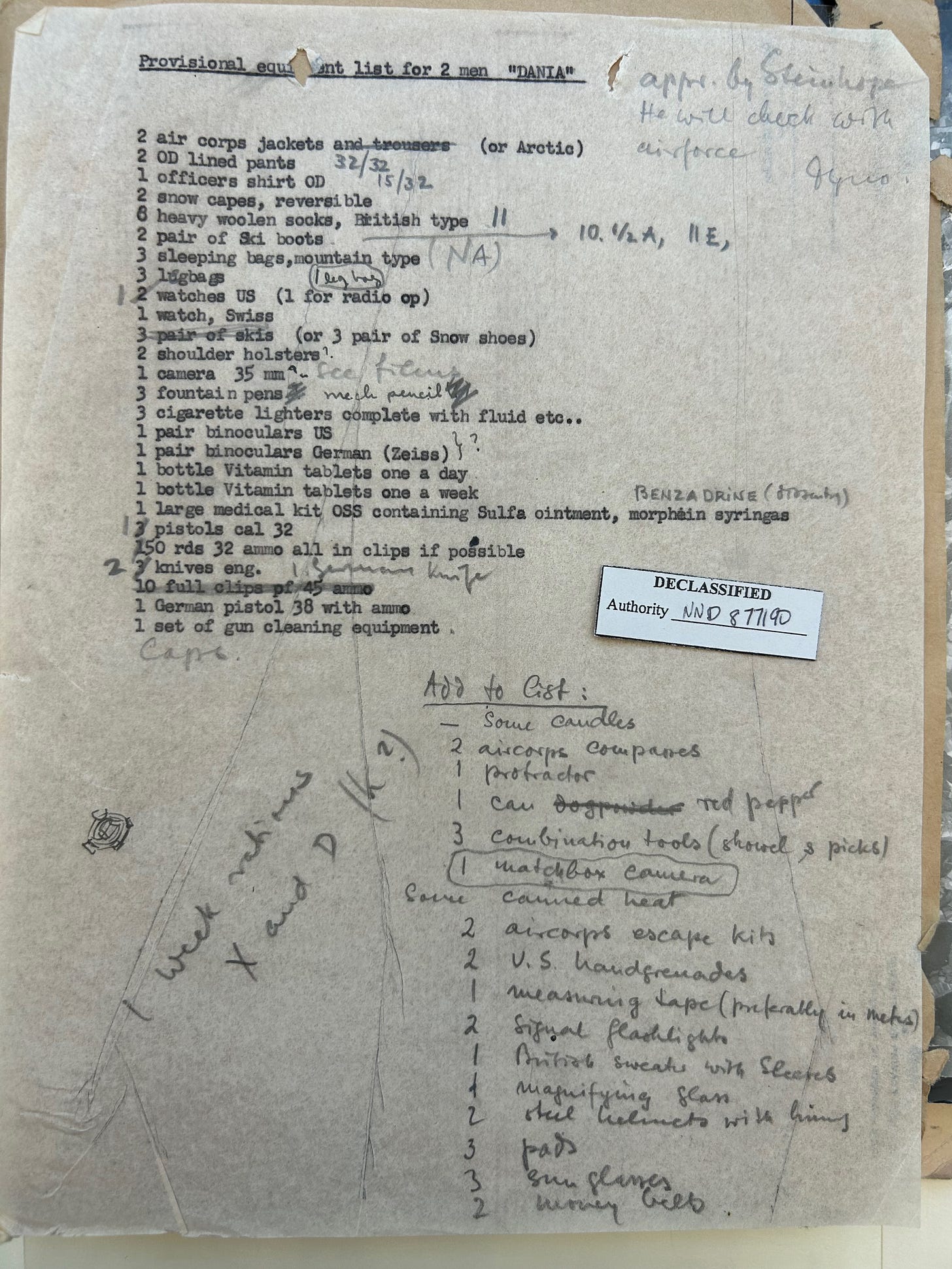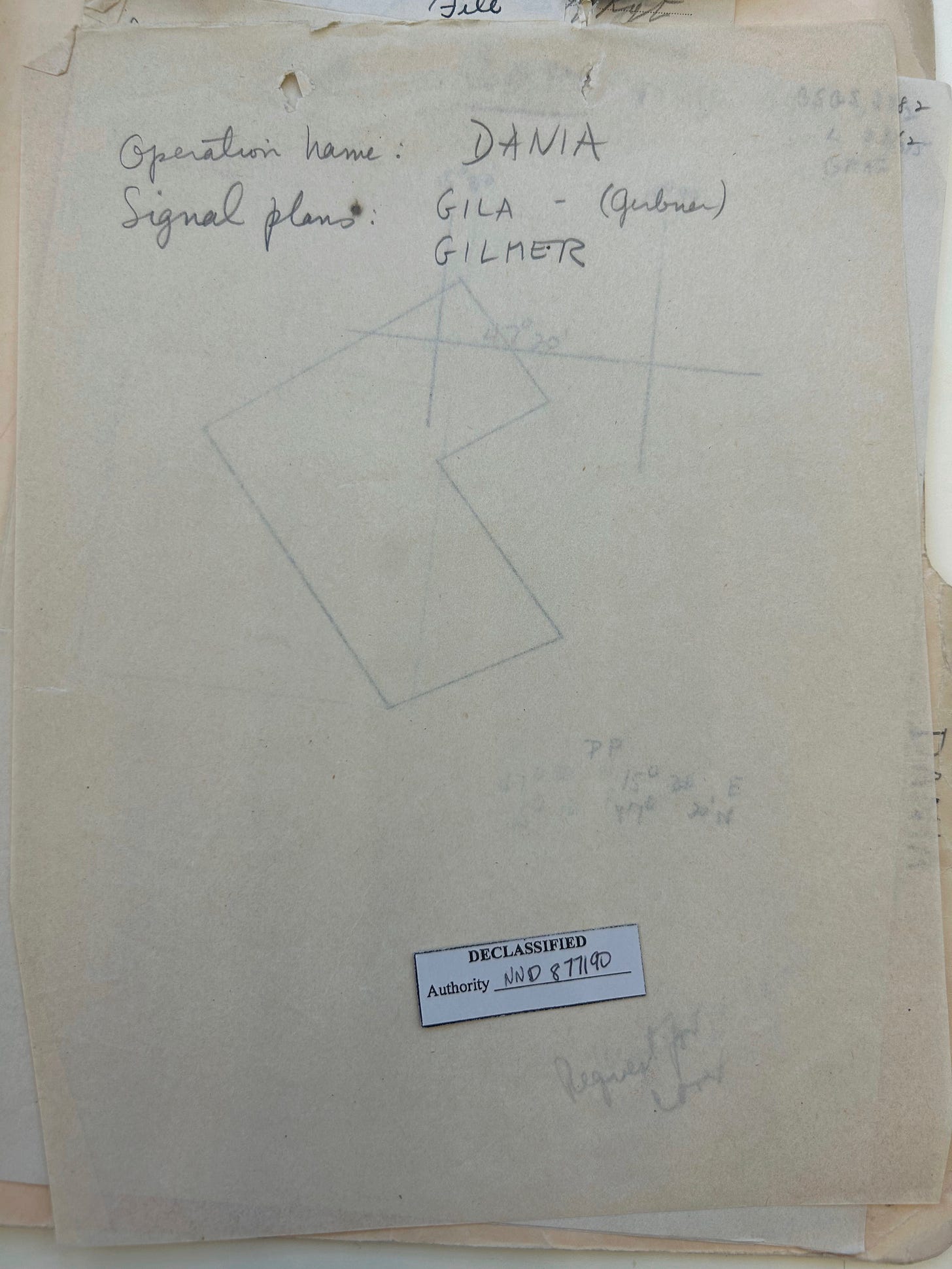Today — what would be Opapa’s 104th birthday — started out as a real headache. I was trying to locate the OSS records for Opapa’s 1945 mission to Austria/Slovenia. But the OSS records are not organized by date or name. Instead, they are organized by mission station and code name. As a result, even though I knew pretty much everything about the chronology and location of Opapa’s 1945 mission, I couldn’t find the records.
After a couple hours working with one archivist, searching through the OSS Finding Aids, I was about to give up and look into a different topic. But then, a second archivist sitting nearby started to help us. He had heard me mention the name of Opapa’s team — Team Dania — and he checked to see if this was, in fact, the code name for the mission. It was! So simple, and yet so elusive.
After that, the records were easy to find, and fascinating: there were several folders, each one documenting a different stage of the mission: (1) the planning; (2) the report filed by the pilots when they returned from the “drop”; (3) messages from the field, when Opapa was in Slovenia, trying to get back to the US base in Italy; and (4) the official report written after they returned, which was based on interviews with Opapa and his team members, Al Rosenthal and Paul Kröck.
The files answer a lot of questions that I had about the mission. I will now be able to reconstruct exactly where they traveled, which division of Slovene Partisans they fought with, where they engaged in combat with German troops, and how they finally made it back to the US base in Foggia, Italy after four months in Slovenia. I can also discern the different “sides” of the story regarding why the mission went so awry (ie. why they landed in Slovenia instead of Austria, as they had intended).
Today, however, I’ll just share a couple documents I found to be fascinating. The first is their annotated packing list for the mission, which includes “snow capes” and “3 cigarette lighters” as well as two pairs of binoculars — one manufactured in the US, and one in Germany:
I love documents like this because they reconnect us with the minutiae of everyday life. Plus, in many cases, the mention of an object — like “one protractor” — can spark the historical imagination: why did they need a protractor? What types of drawing and measurements were they planning to do?
Here’s another document I love: one of the maps that Opapa used to plan his mission. He was studying aerial photographs of the Austrian countryside, where they planned to land. If you look very closely, you can see that “Freiland,” their intended destination, is circled in the bottom right-hand corner.
Unfortunately for Opapa, he was separated from his carefully chosen packing materials AND his maps during the drop, when the pilots made an error and he jumped out of the plane in Slovenia, rather than Austria. As a result, he was left in a foreign country, where he did not speak the language, in the middle of winter, with only the following supplies:
Out of all of their carefully packed supplies, all they had when they landed was one “escape kit,” $200 in US currency, and “an extra watch for trading purposes.”
Yikes.
As the Report on Operation Dania concluded, “their success in completing [their] journey [back to the US base] through dangerous territory under conditions of extreme hardship is an indication of the two soldiers’ intelligence, their coolheadedness in a series of trying circumstances, and their moral and physical stamina.”
***
Nuts to crack:
In the plans for Operation Dania, Opapa was supposed to use the “Gila” line to communicate with the base, while Rosenthal was supposed to use “Gilmer.” Were this names or particular codes used for radio communication? Here is a handwritten note with this information:








So interesting to see the changes to the inventory. Downgraded from three pistols to one; from three knives to two!
I’m also intrigued by the can ‘dog powder’, which was crossed out in favor of red pepper?
Also, I recall he told me that after he landed he tried to signal his location to his two partners by striking a match and waving it in a big circle in the darkness, as he was trained to do. I do not see matches on the list but I do see cigarette lighters.